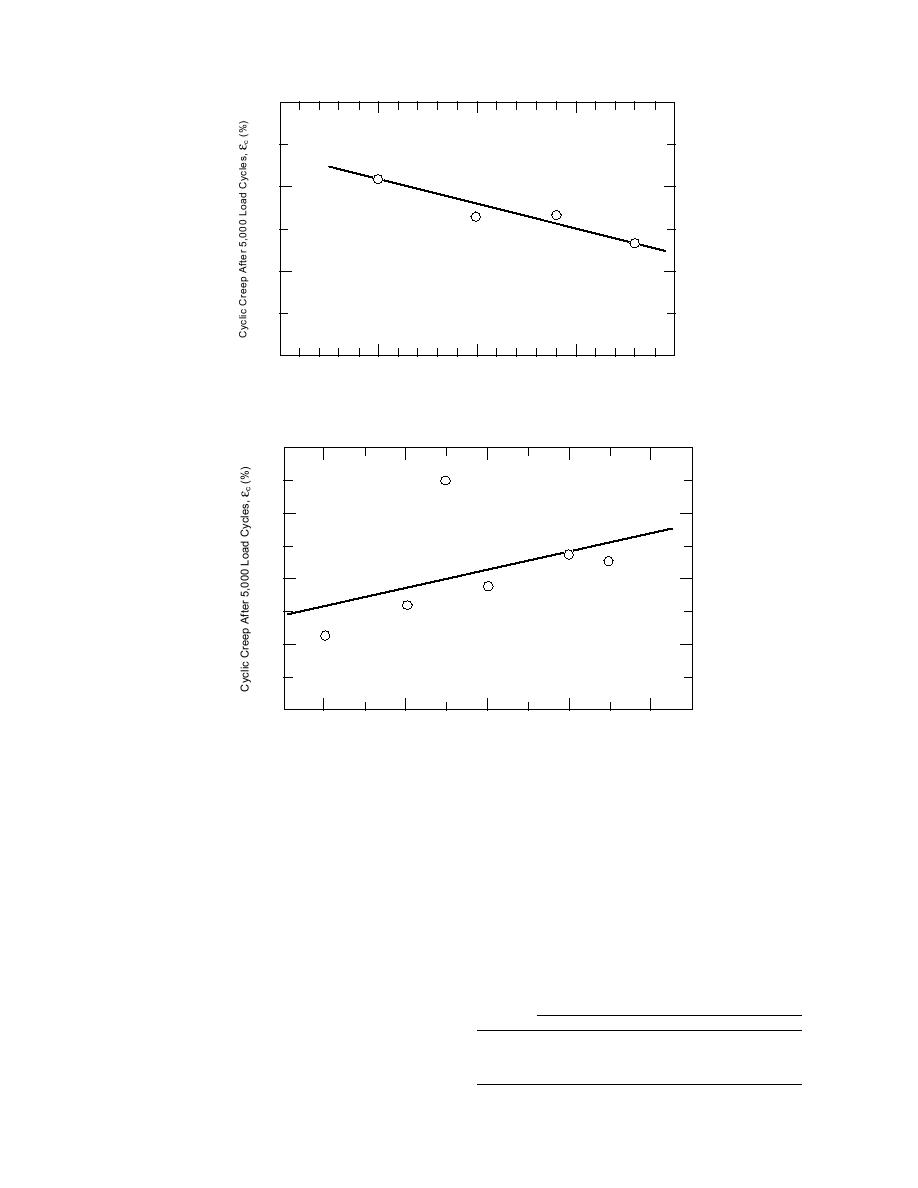
3.00
2.00
1.00
0.00
0
25
50
75
100
Percent of Crushed Particles
Figure 18. Effect of crushed particles on cyclic creep strain. (After Holubec
and Wilson 1970.)
4.00
3.00
2.00
1.00
0.00
0.70
0.60
1.00
0.90
0.80
Rounded
Angular
Sphericity and Angularity
Figure 19. Effect of combined sphericity and angularity on cyclic creep of
base course materials. (After Holubec and Wilson 1970.)
further work in this area may be required. In the
The other work was done by Barksdale and
same study, the friction angle was found to
Itani (1994). They presented results of the effect of
increase with increasing angularity (Fig. 20).
aggregate shape on the resilient and permanent
deformation behavior of five base course materi-
Based on their study, Holubec and Wilson recom-
mended that repeated load tests be conducted on
als. The gradation used in the study is shown in
characterizing the performance of base course
Table 15. The medium gradation in Table 15 is
materials and cautioned on the use of the angle of
similar to the VAOT fine gradation for subbase of
internal friction as a parameter for predicting
crushed gravel.
base course performance. In my opinion, with
thawing soils, the friction angle may be a good
Table 15. Gradation of test aggregates. (After
Barksdale and Itani 1994.)
indication of the ability of the base course to resist
permanent deformation. When the base is satu-
Percent passing
Gradation 38.1 mm 19 mm 9.5 mm No. 4 No. 40 No. 200
rated, the load levels commonly applied on pave-
ment structures when they are dry may be high
Medium
100
80
60
45
13
4
enough to move the base response from the elas-
Coarse
100
65
43
27
7
0
Fine
100
85
70
58
25
10
tic to the plastic (failure) zone.
17



 Previous Page
Previous Page
